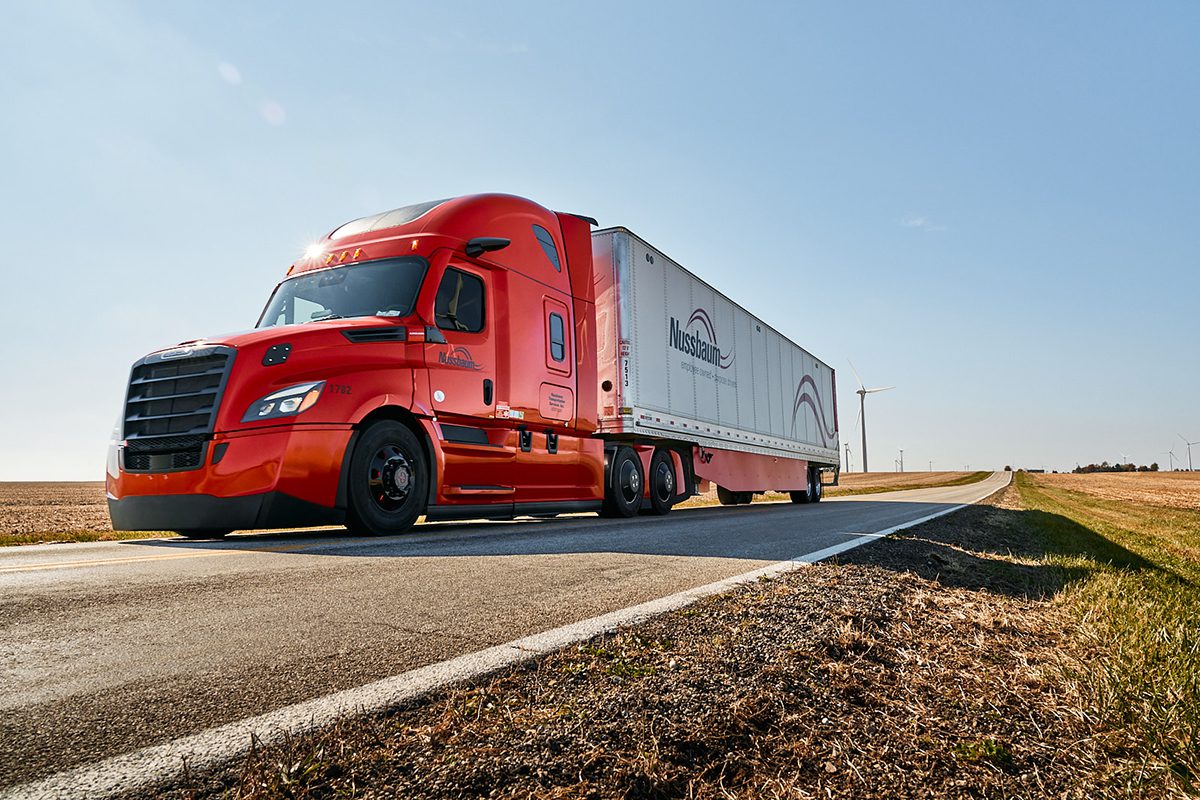Improving freight efficiency should be the goal of every fleet and there are a host of options available to fleets to do just that. But with all those choices it can be daunting to select the technology that is right for a given fleet or groups of vehicles inside a fleet. To help fleets in the decision making process, the North American Council for Freight Efficiency (NACFE), has conducted an Annual Fleet Fuel Study (AFFS). The first AFFS was in 2012 and after a three-year pause given the challenges of the pandemic on the trucking industry, NACFE recently released the ninth edition of the study.
The study report contains the results of a deep-dive investigation into the adoption of various products and practices for improving freight efficiency among 24 major North American fleets. Fleets share their purchase and use of 86 technologies and practices. NACFE believes this report should prove invaluable to fleets’ efforts to improve their fuel economy and for suppliers to develop and deliver efficiency products to the marketplace.
Key study findings include:
- Fleet-wide efficiency of the studied fleets stalled from 2018 to 2021. We think this occurred for a variety of reasons including the fact that many fleets upped their average speed and as a result of supply chain issues fleets are operating older trucks.
- All-heavy duty tractors in the U.S. have improved efficiency over the past few years. In fact, fuel efficiency for all heavy-duty Class 8 combination vehicles went from 5.97 to 6.24 mpg during the last three years.
- Sustainability has become a large driver for fleets to decarbonize the way they move goods.Corporations are responding to an increased demand by shippers and the general public to move goods more sustainably. Fleets are not waiting for zero-emissions solutions to do so.
- Regulations will drive efficiency throughout the next two decades. GHG 2024 and 2027 regulations are coming up and they will require significant mpg improvements in diesel engines. It is also likely that there will be a GHG Phase 3 rule for implementation throughout the 20230s.
One item of note about this year’s study, several of the new fleets that provided data operate in regional haul applications. Many of them use day cabs rather than sleepers and traditionally regional haul fleets use fewer aerodynamic devices. This negatively impacts fuel economy. This move to regional with their return to base operations is good for the industry as it brings truck drivers home more often and provides a more consistent place for alternative fueling including electric truck charging.
While we are pleased with the adoption rates of fuel efficiency technologies and practices and the resulting higher mpg, there is still room for improvement based on what has been achieved by some fleets that are committed to freight efficiency and by what we have seen with NACFE’s Run on Less, the DOE SuperTrucks and Shell Starship.
NACFE conducted its first Run on Less event in 2017. A total of seven trucks averaged 10.1 mpg over the 17 days of the Run. These were fleets delivering real freight in their normal routes using commercially available technology. At that time, the national fuel economy average was 6.4 mpg. In 2019, we held Run on Less Regional. This time 10 trucks operating in regional haul duty cycles averaged 8.3 mpg. If all 80,000 trucks in North America operating in regional haul were at 8.3 mpg, more than $9 billion dollars would be saved.
The Department of Energy funded four SuperTruck 1 teams tasked with building prototype tractors and trailers that would double freight efficiency. Four teams created equipment that reported fuel economy in the 10 to 12.5 mpg range. We should soon have results from the five teams in SuperTruck 2 sometime in the near future.
Shell’s Starship 2.0 project was designed to demonstrate how Class 8 trucking energy usage can be reduced by leveraging today’s existing energy efficient technologies. In 2021, this truck achieved 12.0 MPG hauling 22,000 lbs. of payload in North Carolina.
Finally, and as we move into a zero-emissions future, it is important to note that many of the efficiency enhancing technologies that are available today are well suited for use on electric vehicles as well as other alternative fueled trucks. In the case of electric vehicles, the technologies will improve vehicle range and thereby reducing the need for larger battery packs.
Many believe that zero emissions trucks are the only way to decarbonize trucking but improving the freight efficiency of existing diesel trucks is definitely a way to create less carbon emissions while delivering the goods. We have made great strides in moving the national average mpg from 5.97 to 6.24 — a 4.5% increase — with the AFFS fleets having a 21% increase over average fleets. Fleets need to make the investments in the technologies and practices that will get their mpg closer to 10 — which is not an unrealistic goal.
There is no doubt we have come a long way toward making diesel-powered trucks consume less fuel per every mile driven. There is still more work to do. Let’s get to it.



